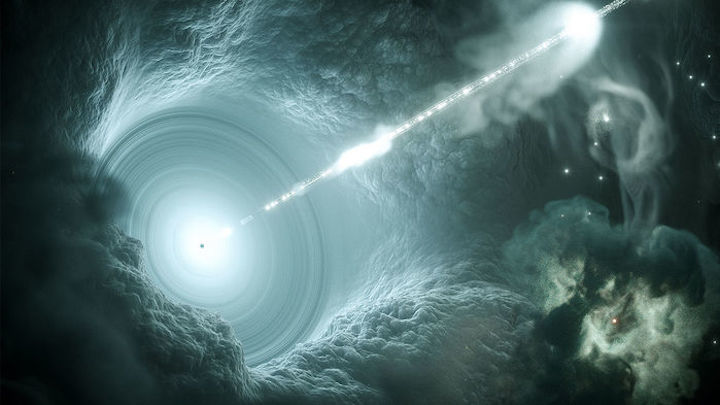1.12.2018

When were most of the universe’s stars born? Scientists have long known that the answer is “long ago.” But a new study that scrutinizes the radiation from blazing quasars suggests a far more precise answer: some 3 billion to 4 billion years after the big bang.
Blazing quasars, or “blazars,” are galaxies whose intense brightness is fueled in large part by gas, dust, and stars being sucked into the supermassive black holes that lie at their centers. Unlike most distant stars and galaxies, blazars pump out gamma rays that can be picked up by sensors on space-based observatories orbiting Earth. As material spirals inward along the plane of the galaxy’s disk, powerful beams of radiation (above) emerge along the galaxy’s rotational axis. When one of those spotlightlike beams is pointed toward Earth, the blazars appear particularly bright.
In the new study, researchers looked at the radiation beamed toward Earth by more than 700 blazars scattered across the sky. Analyzing the blazars’ gamma ray emissions, they found that some were blocked more effectively than others. That’s significant because when photons from the gamma rays travel through space, they can interact with the low-energy photons from stars to create subatomic particles like electrons and protons. So the more gamma ray emissions blocked, the thicker the fog of photons in that part of intergalactic space—and the more stars required to make them.
Quelle: Science
